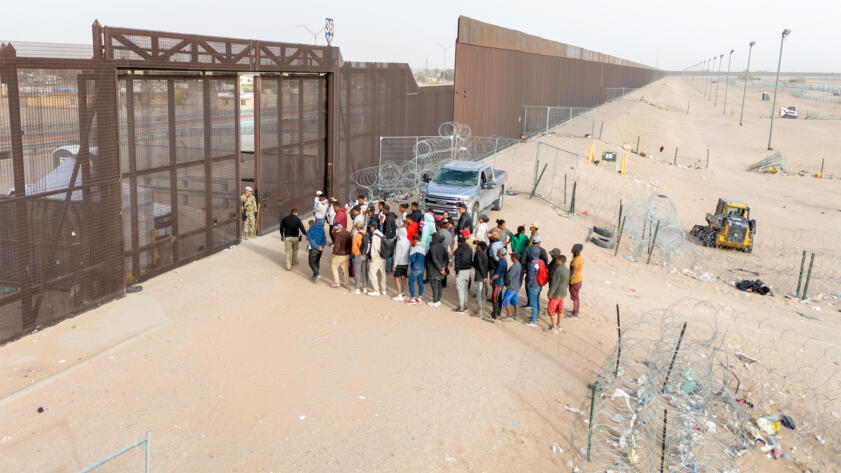Subscribe to Hello World
Hello World is a weekly newsletter—delivered every Saturday morning—that goes deep into our original reporting and the questions we put to big thinkers in the field. Browse the archive here.
What’s up, world? It’s Ese.
I take the subway here in New York City quite often: It’s my shuttle to and from uptown visits with family, downtown museum trips and dinners with friends, and cross-borough appointments and shopping trips.
Very fortunately, I’ve never been a victim of a violent crime while traveling underground, a bit of anecdata that probably means little to anyone who has been following the news about our subways lately. In the past month alone, the subways have been host to a wild rush-hour shooting, multiple stabbing incidents, and other random assaults.
These scary incidents have prompted dramatic official reactions: Early last month, Governor Kathy Hochul ordered 750 National Guard soldiers into the subway to scan bags at high-volume stations. Mayor Eric Adams also added an additional 800 police officers to the system.
Of course, it’s critical to say here that while perceptions of safety are important, the subway system is relatively safe, based on the available evidence. More than three million riders take the train each day, and the vast majority do so without incident. According to a recent New York Times analysis of data from mid-2022, there was around one violent crime per one million rides on the subway. Since then, the Times reported that “the overall crime rate has fallen and ridership has increased, making the likelihood of being a victim of a violent crime even more remote.”
Even Mayor Adams and the NYPD report that the subway system is getting safer. On Wednesday, the NYPD announced a reduction in subway crimes, saying overall transit crime fell almost 24 percent in the first quarter of 2024. Officials credited the reduction in reported incidents to additional officers working in the transit system.

News
Malfunctioning NYC AI Chatbot Still Active Despite Widespread Evidence It’s Encouraging Illegal Behavior
Mayor Eric Adams said the city is working to fix the problems, and the site now advises visitors to “not use its responses as legal or professional advice”
“It is highly encouraging to see the tangible results of our hard work—the investment we are making is clearly paying dividends,” said NYPD commissioner Edwin Caban in the announcement. “We vow to maintain our tight focus on the drivers of crime in order to improve transportation safety—and perceptions of safety—at every station, on every train, at all hours of the day and night. That is what New Yorkers expect and deserve.”
Part of that investment includes Adams’ embrace of crime-fighting tech. Last week, Adams announced the city would pilot gun detectors—yes, a lot like metal detectors but for guns—in the subway. The trial is the latest in a series of tech solutions that Adams, a former cop, is exploring for subway safety: Last September, Adams announced a pilot program with Knightscope, a company that makes autonomous security robots, at Times Square, the busiest of the subway’s 472 stations. The robot, which weighs more than 400 pounds, is equipped with a camera to record images and videos. It also has a call button to report incidents.
Crime-fighting tech like robots and gun detectors aside, there is one technology I do think would make the subways a lot safer: barriers at the edges of the platforms.
Just last week, a man was pushed onto the tracks in front of an oncoming 4 train in Harlem. Police say the deadly attack was unprovoked. And this week, I heard from a colleague that ANOTHER person was struck by a train earlier in the day.
I thought: In 2024, why aren’t officials investing in technology that makes it difficult to push someone in front of a train or prevents deaths by suicide on the tracks?

News
The Future of Border Patrol: AI Is Always Watching
Human rights advocates warn of algorithmic bias, legal violations, and other dire consequences of relying on AI to monitor the border
To its credit, the MTA, which is controlled by New York State, published a sprawling, 3,920-page report on its yearslong feasibility study for platform screen doors in February 2020. Turns out station platform widths, space for accessibility clearance, multiple train car types, limited height, and structural integrity of platform edges are among the factors complicating a full rollout of platform screen doors in such an old system. The agency estimated that system-wide feasibility for a platform screen door program is 27%, or 128 of the 472 stations.
Price is a challenge, too. The total cost for installing full-height gates in just those 128 stations would be over $7 billion, the agency found, and half-height gates would cost $6.53 billion. Once installed, the agency would have to spend more than $119 million each year to maintain the doors.
The closest thing we have to subway gates in the city right now are metal screens, installed earlier this year in one station in Manhattan. These barriers, which are bolted to the ground, aren’t mechanically operated: they don’t slide open or closed, so one can still fall or be pushed through the open space at the platform edge. Sadly, in a timeline where we may one day have gun detectors and massive robots patrolling underground, these steel fences appear to be the best tool we have to curb preventable subway deaths.
Thanks for reading! As always, you can reach me with thoughts at ese@themarkup.org.
Ese Olumhense
Investigative Reporter
The Markup






